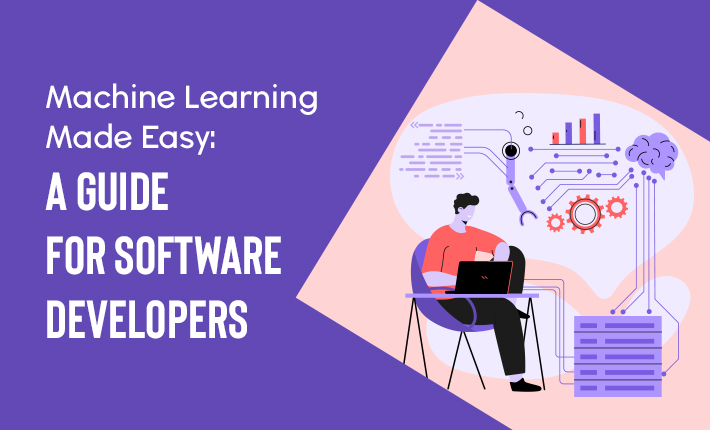Posted At: Jun 02, 2023 - 524 Views

Introduction: Machine learning has become a powerful tool in various industries, revolutionizing the way we solve complex problems and make data-driven decisions. As a software developer, diving into the world of machine learning may seem daunting at first. However, with the right guidance and resources, you can easily get started and harness the power of machine learning in your software development projects. In this blog, we will provide you with a beginner-friendly guide to machine learning, equipping you with the knowledge and resources to embark on your machine learning journey.
- Understanding the Basics:
- Define machine learning and its applications in software development.
- Differentiate between supervised, unsupervised, and reinforcement learning.
- Building a Solid Foundation:
- Brush up on your knowledge of linear algebra, calculus, and probability.
- Familiarize yourself with programming languages commonly used in machine learning, such as Python and R.
- Exploring Machine Learning Libraries:
- Dive into popular machine learning libraries like scikit-learn, TensorFlow, and PyTorch.
- Learn how to use these libraries to implement machine learning algorithms and models.
- Data Preprocessing:
- Understand the importance of data preprocessing in machine learning.
- Learn techniques such as data cleaning, normalization, and feature scaling.
- Supervised Learning:
- Explore supervised learning algorithms like linear regression, logistic regression, and decision trees.
- Learn how to train models, make predictions, and evaluate their performance using metrics like accuracy and precision.
- Unsupervised Learning:
- Discover unsupervised learning algorithms like clustering and dimensionality reduction.
- Understand how these algorithms can uncover patterns and structures in your data.
- Model Evaluation and Validation:
- Gain insights into different evaluation techniques like cross-validation and train-test splits.
- Learn how to assess the performance of your machine learning models and avoid overfitting.
- Deep Learning:
- Get an introduction to deep learning and neural networks.
- Explore frameworks like TensorFlow and PyTorch for building and training deep learning models.
- Deploying Machine Learning Models:
- Learn how to deploy machine learning models into production systems.
- Understand the considerations and challenges involved in deploying models at scale.
- Stay Updated and Engage in Projects:
- Keep up with the latest developments in the field of machine learning.
- Engage in hands-on projects to apply your knowledge and gain practical experience.
Conclusion: Machine learning has the potential to unlock new possibilities in software development, enabling you to build intelligent applications and make data-driven decisions. By following this guide, you can start your machine learning journey with confidence, gradually expanding your skills and exploring advanced topics. Remember, practice and hands-on experience are crucial in mastering machine learning. Embrace the opportunities that machine learning offers and prepare to create innovative solutions that can make a significant impact in today's technology-driven world.
